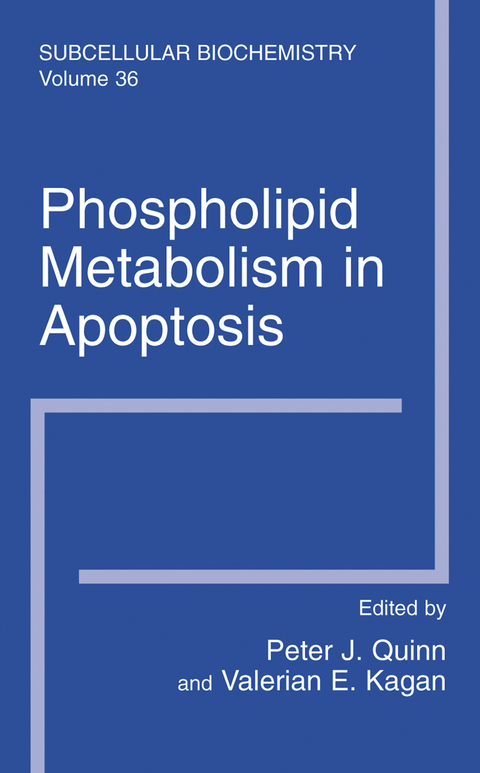
Phospholipid Metabolism in Apoptosis
Kluwer Academic/Plenum Publishers (Verlag)
978-0-306-46782-0 (ISBN)
Lipid Metabolism and Release of Cytochrome c from Mitochondria.- Interaction Between Cytochrome c and Oxidized Mitochondrial Lipids.- Plasma Membrane Phospholipid Asymmetry.- Apoptosis by Phosphatidylserine in Mammalian Cells.- Phosphatidylserine Peroxidation During Apoptosis.- Role of Nitric Oxide and Membrane Phospholipid Polyunsaturation in Oxidative Cell Death.- Oxidized LDL-Induced Apoptosis.- Induction of Apoptosis by Redox-Cycling Quinones.- Apoptosis Induced by Ionizing Radiation.- Ceramidases in the Regulation of Ceramide Levels and Function.- Effect of Ceramides on Phospholipid Biosynthesis and Its Implication for Apoptosis.- Acid Sphingomyelinase-derived Ceramide Signaling in Apoptosis.- Cellular Signaling by Sphingosine and Sphingosine 1-Phosphate.- Ceramide in Regulation of Apoptosis.- Lipid Signaling in CD95-mediated Apoptosis.- Phosphatidylinositol 3-kinase, Phosphoinositides and Apoptosis.
| Erscheint lt. Verlag | 31.5.2002 |
|---|---|
| Reihe/Serie | Subcellular Biochemistry ; 36 |
| Zusatzinfo | 30 Illustrations, black and white; XVI, 340 p. 30 illus. |
| Verlagsort | New York |
| Sprache | englisch |
| Maße | 155 x 235 mm |
| Themenwelt | Studium ► 1. Studienabschnitt (Vorklinik) ► Anatomie / Neuroanatomie |
| Studium ► 2. Studienabschnitt (Klinik) ► Humangenetik | |
| Naturwissenschaften ► Biologie ► Biochemie | |
| Naturwissenschaften ► Biologie ► Zellbiologie | |
| ISBN-10 | 0-306-46782-8 / 0306467828 |
| ISBN-13 | 978-0-306-46782-0 / 9780306467820 |
| Zustand | Neuware |
| Haben Sie eine Frage zum Produkt? |
aus dem Bereich


